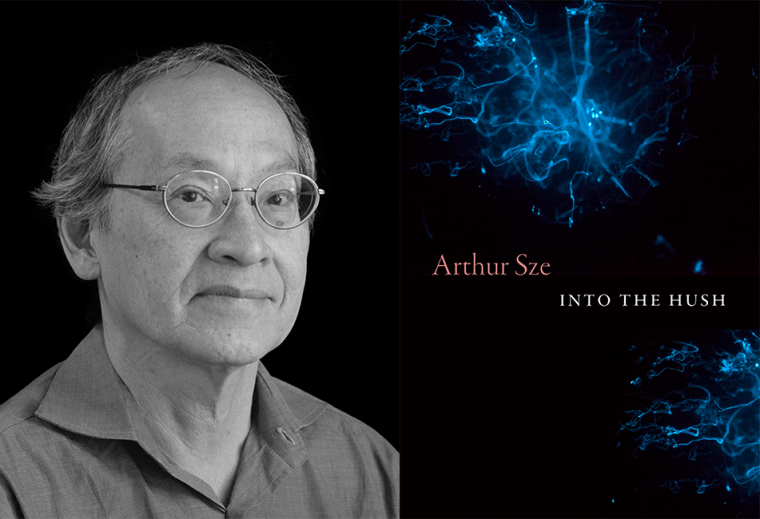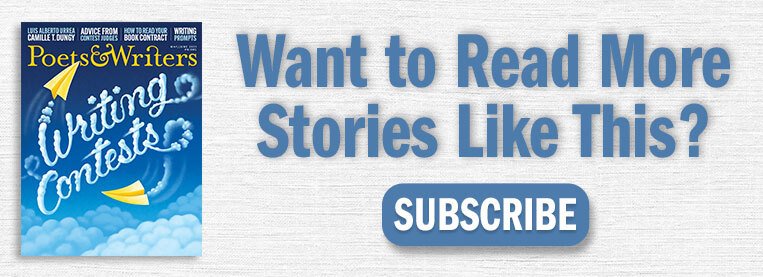This week’s installment of Ten Questions features Arthur Sze, whose poetry collection Into the Hush is out today from Copper Canyon Press. Sze’s twelfth book of poetry, Into the Hush conjures fruit trees and gunshots, butterflies and chemistry, animals and man. The poems embody the voice of an eraser and the voice of a jaguar. Always with exacting attention to the world around him, Sze leverages a range of innovative forms like ekphrastic poems, epistles, and twin pantoums to respond to contemporary challenges such as endangered cultures and the climate crisis. In London Grip, Charles Rammelkamp describes Sze as having “a mystic’s sense of the interconnectedness of the universe,” adding that “Sze joins disparate realities with…poetic bonds of sight and being.” Arthur Sze is a poet, translator, and editor. He is a recipient of the 2025 Bollingen Prize for American Poetry for Lifetime Achievement, the Ruth Lilly Poetry Prize, the Shelley Memorial Award, the Jackson Poetry Prize, and a Guggenheim Fellowship, among other honors. Sze was the first poet laureate of Santa Fe, where he lives with his wife, the poet Carol Moldaw. A chancellor emeritus of the Academy of American Poets and a fellow of the American Academy of Arts and Sciences, he was the 2023–2024 Mohr Visiting Poet at Stanford University. He is a professor emeritus at the Institute of American Indian Arts.

Arthur Sze, author of Into the Hush. (Credit: Mariana Cook)
1. How long did it take you to write Into the Hush ?
It took me over four years, from 2019 to 2023, to write this book.
2. What was the most challenging thing about writing the book?
I wanted to use poetic forms that I had seldom or never used before to help me widen my range. For the first time I wrote two short pantoums; I broke the quatrains into couplets and then I floated a caesura inside each line to create tension and shift the rhythm. I wrote two dramatic monologues, in the voice of a jaguar and in the voice of an eraser, and then when I was working on a sequence where an aspen tree speaks, I used a stochastic procedure: I threw a die and let the ensuing numbers between one and six determine the spacing between words. I also wrote a zuihitsu in which two people hold one calligraphy brush and create the word “emptiness” together; but the most important challenge was to try to enact a simplification so that clarity is experienced as a deep mystery.
3. Where, when, and how often do you write?
I live in Santa Fe, New Mexico, and I like to get up at 5 AM and write in the dark and through sunrise every day in my writing studio. In July and August 2022, I was invited to be an artist-in-residence at the Merwin Conservancy on Maui, so my daily rhythm for that month was to sit at William Merwin’s former writing desk and write every morning as sunlight emerged and lit up the palm forest outside the windows. The last sequence in the book, “Pe‘ahi Light,” was written there.
4. What are you reading right now?
I have just read in manuscript Best Literary Translations 2025, edited by Cristina Rivera Garza (forthcoming from Deep Vellum), and as the guest editor of Best Literary Translations 2026 I have read seventy-nine finalist works and selected thirty-five pieces of poetry, fiction, and nonfiction, translated from twenty-two languages, for inclusion.
5. Which author, in your opinion, deserves wider recognition?
I believe Jennifer Elise Foerster deserves wider recognition. I was thrilled by the lyric complexity of her book The Maybe-Bird (The Song Cave, 2022).
6. What was your strategy for organizing the poems in this collection?
When the book was far along, I laid all the poems out on the floor and placed blank sheets between poems where there were pauses and where I thought section dividers might go. One day I realized that the seven paired sections of “Zuihitsu” could be interleaved between poems and that those sections formed a rhythmical through line.
7. What is one thing that your agent or editor told you during the process of publishing this book that stuck with you?
My editor, Michael Wiegers, gives me plenty of space and time to work. In doing so he is implicitly saying, “Write the best book you can.”
8. If you could go back in time and talk to the earlier you, before you started Into the Hush, what would you say?
Write one poem at a time and resist knowing where you are going.
9. Outside of writing, what other forms of work were essential to the creation of Into the Hush?
The two forms of work that are essential to this book are Chinese calligraphy and the designs and procedures of architect Steven Holl.
10. What’s the best piece of writing advice you’ve ever heard?
So many decades ago, when I was a student at the University of California in Berkeley, I audited a fiction writing workshop with Lillian Hellman. I visited her during office hours, and one day she said, “I don’t know anything about poetry, but I have some advice: Don’t ever stop writing. If you stop for even a few months, you will lose all the momentum you are developing.”







